Rock books don’t sell in New Zealand. Especially when they are about New Zealand sounds. That was a New Zealand publisher’s mantra for years and may still be. I guess it saved on library shelf space.
The commercial case against was there for all to see. Most New Zealand music books hit the remainder table. Scarcity of publication didn’t result in rarity either. Until a few years ago it was possible to find an almost complete set of the nation’s best efforts cheap in any decent second-hand bookshop.
Thousands of popular music history books were published overseas from the 1990s on as affected generations looked to have their experience and influences better detailed, articulated and analysed. New Zealand could barely muster 50.
Local books had to be particularly good or timely or more likely an isolated labour of love. The inward-looking cultural nationalism of recent decades didn’t help. Wide-ranging national or inward looking provincial or city music histories were a better fit for the times, it seemed.
The fickle and fleeting nature of popular fame worked further against the researching and writing of music history as well by cramping the time frame available to realise rounded work relative to the subject’s fame.
Seeing Stars
Which isn’t to say well-written and researched books utilising popular music culture in New Zealand didn’t appear. John Berry’s Seeing Stars: a study of show folk in New Zealand (1964) was a pioneering fly on the wall piece of New Zealand music writing that is still well worth searching out.
Napier-born Berry, a long-time Auckland Star “Show Folk” columnist from January 1960 on, met and chronicled New Zealand greats Howard Morrison and Johnny Devlin alongside a rich cast of international touring stars, including Roy Orbison, Ben E. King, Chubby Checker, The Beach Boys, The Surfaris and The Beatles.

Berry had a clear love of jazz and this too is well covered as he evokes encounters with Louis Armstrong, Dizzy Gillespie, Sarah Vaughan, Ella Fitzgerald, Oscar Peterson and Dave Brubeck. Then there were the dodgy comedians, one hit wonders and fly-by-nighters and a small quirky cast of theatre, radio, TV and newspaper industry extras, all observed and noted in Berry’s crisp, insightful style. John Berry would go on to pen Man To Man (1980, a biography of Musicians Union secretary Tom Skinner) and 1986’s Television New Zealand Country Music.

Shoestring Pirates
Adrian Blackburn’s The Shoestring Pirates (1974) found all the requisite drama of the late 1960s for a compelling text that chronicled the clash of generations as the ossified guardians of New Zealand culture tried to stem the flow of pop music and commerce in Auckland in the late 1960s.
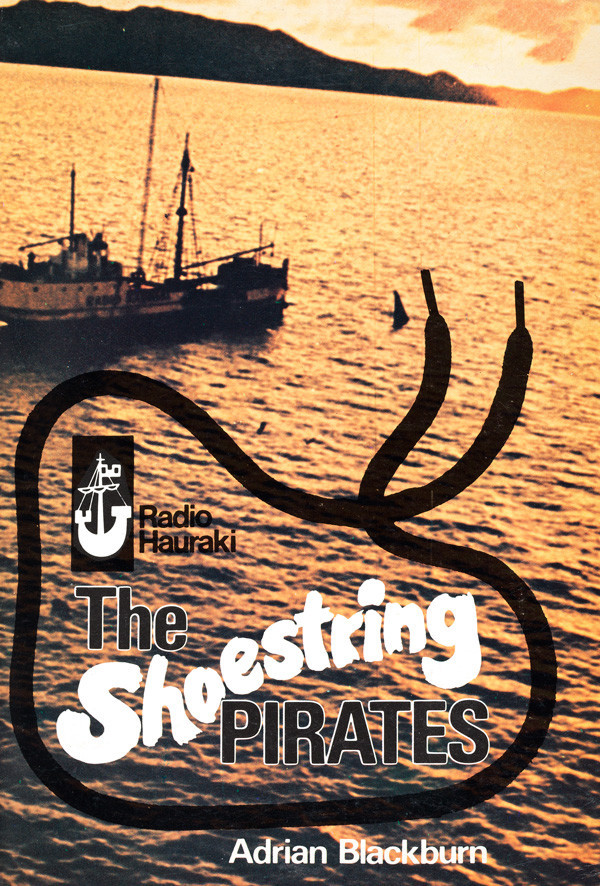
Echoing England’s experience of renegade broadcasting, a group of maverick journalists and radiomen had launched an upbeat US style pop pirate radio station, Radio Hauraki, in the waters off Auckland. Denied a licence and banned from land, the rebels found a legal loophole in a small triangle of sea off the Hauraki Gulf that wasn’t covered by radio broadcasting legislation. They hired the Tiri, a rickety ship complete with salty old captain and broke free from port. But it all had a price. Terrifying open seas battered the Tiri and took the life of an onboard DJ just as the boat was due to return to port. The pirates’ return to land brought eventual respectability. Their righteous rebel stance was steeled by tragedy and huge public support.
History books specifically about New Zealand’s music industry aren’t numerous. Mike and Jeremy Chunn’s Mechanics of Popular Music: a New Zealand Perspective stretched to two editions. Bryan Staff and the late Sheran Ashley’s For The Record – A History of The Recording Industry in New Zealand (2002) is also worth checking out.
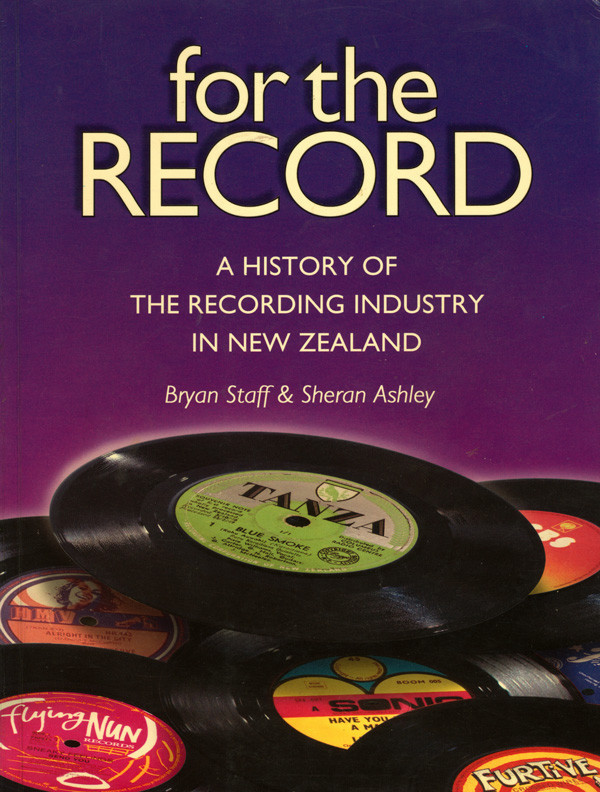
It was a 14-year wait after Shoestring Pirates before the next book-length evocation of New Zealand’s rock and roll culture made print. Waikato author Graham Hutchins’ Tall Halfbacks: “A Ticket To Ride” to “Yesterday”, a little-noticed 1987 tale of The Beatles (and rugby) inflaming small town youth in mid-1960s New Zealand could well be the first New Zealand rock and roll novel.
At least that’s what I thought until music historian Chris Bourke pointed to Ian Wedde’s Dick Seddon’s Great Dive: a novel, which took up a whole issue of Islands in 1976.
Tall Halfbacks was published by Dunedin imprint John McIndoe and is still easy to find in second hand bookshops, as is its worthy sequel, Hello Goodbye (1991). Hutchins would go on to explore the topic further in Eight Days A Week: The Beatles' Tour of New Zealand 1964 from 2004.
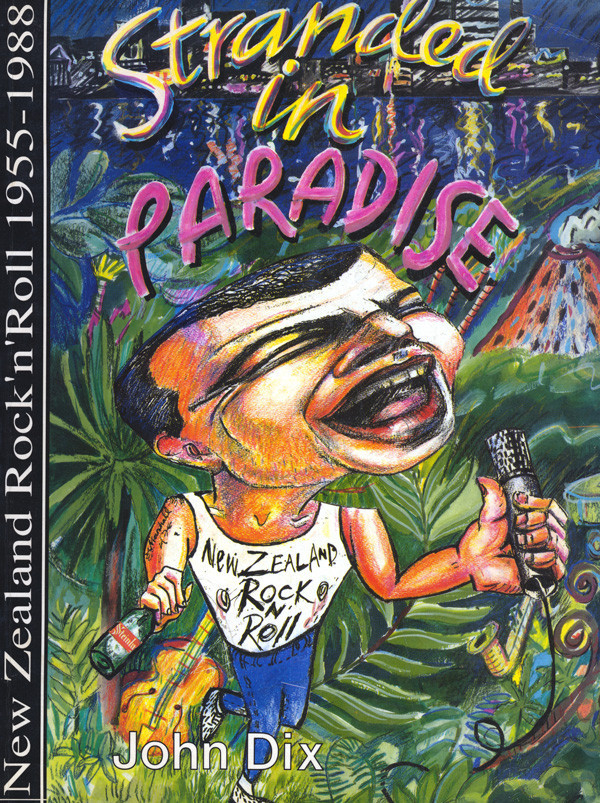
Stranded in Paradise
Brushing timid mainstream publishers aside, John Dix finally published his masterwork, the free flowing and standard setting Stranded In Paradise: New Zealand Rock n Roll, 1955-1988 in 1988, and in doing so, he cracked open the throne room of New Zealand rock and roll culture. The challenge for New Zealand music and pop culture writers lay all around like jewels in an Uncle Scrooge cartoon as the doorways to a thousand untold stories were revealed.
Penguin Books published a second, updated edition of Stranded In Paradise in 2005 but unfortunately failed to take full advantage of the chance to fill in New Zealand rock’s subsequent years. Subsequent national histories, David Eggleton’s Ready To Fly: The Story of New Zealand Rock Music (2003) and Gareth Shute’s NZ Rock 1987-2007 (2008) stretched the time frame out.
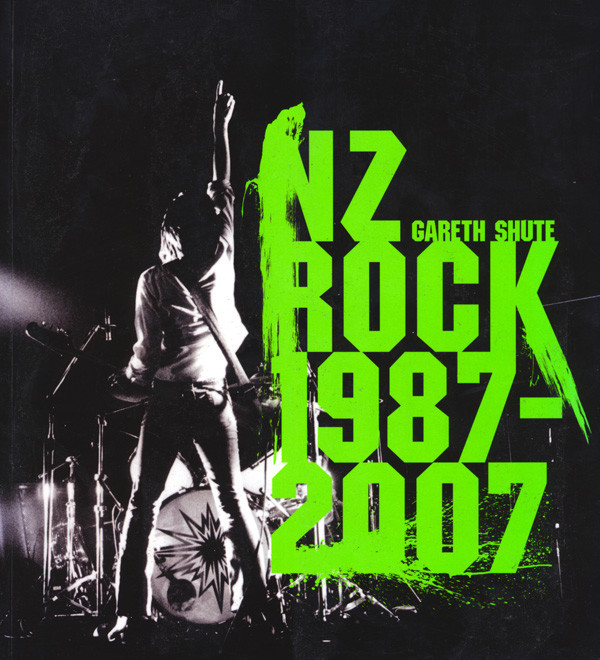
New Zealand writers were on a roll in the late 1980s. Long time music scribe and newspaperman Colin Hogg’s Angel Gear: On the Road with Sam Hunt (1989) shone brightly. His smoky road movie of a book has poet Sam Hunt and rock journalist Hogg touring New Zealand in the late 1980s and early 1990s in Hunt’s classic car, bouncing along in a haze of pot and booze from poetry readings in pubs, schools and cafes.
Too few women have written about their experience in New Zealand rock and roll and its attendant culture, but when they have, the books been mostly well observed fiction like Sue McCauley’s Bad Music (1990). As 1960s era survivor Kath’s daughter Sha hooks up with a wizened old rocker, a flood of personal music related memories are unleashed.
Bad Music is rich with tales of encountering rock and roll for the first time and watching Sid and Nancy at The Academy. There’s dancing in the Gluepot, old musical flatmates, Radio With Pictures, K Road record shops and an essay on Elvis Presley in there, as well as Kath peering out from her inner city op shop, Second Gear. Several compelling plotlines seam the work and subtly push Bad Music from memoir to fiction.
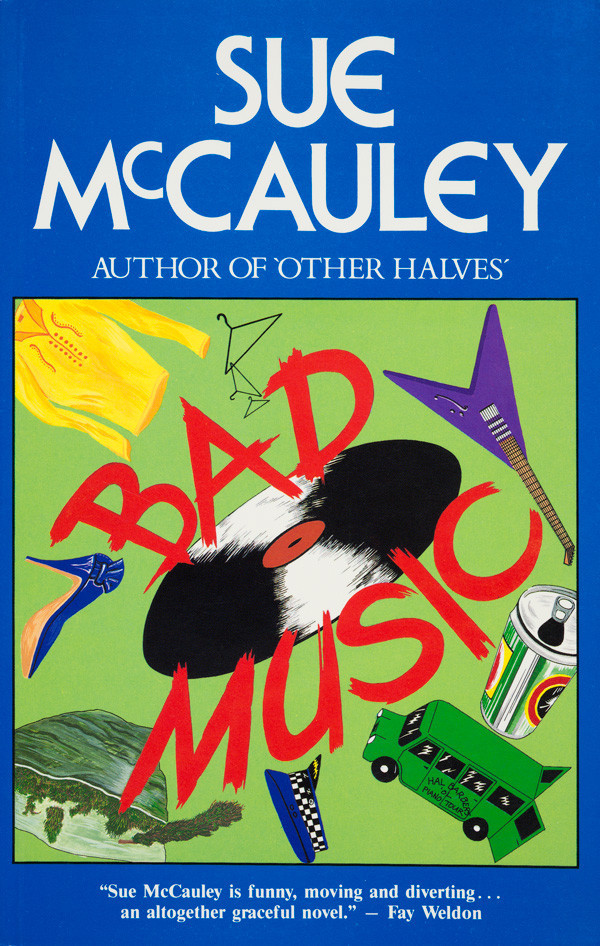
All Shook Up
Wellington-based journalist and historian Redmer Yska looked back to the early days of modern teen assertion for All Shook Up: The Flash Bodgie and the rise of the New Zealand Teenager in The Fifties, his 1993 social and cultural history. These were deeply strange and deeply conservative times as the whole country went crazy over adolescent sex in Lower Hutt.
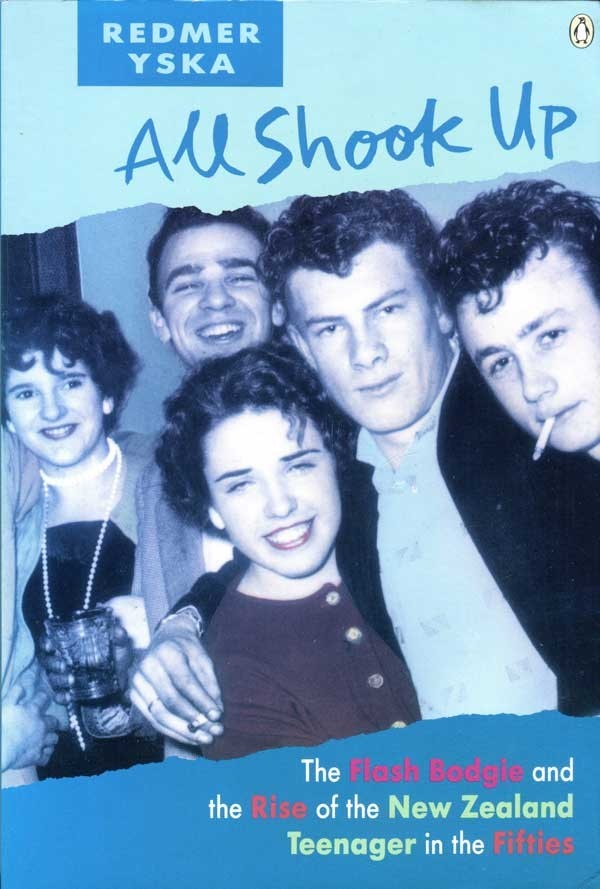
All Shook Up has a formality that is offset by wild brutal tales of teen shotgun murder, jazz, milk bar cowboys and demonised pop culture. It’s a sharp reminder that one of the biggest battles of the last century was the 1950s teen generation wrestling the right to self-expression and a separate identity from their parents. Yska’s New Zealand Green: The Story of Marijuana in New Zealand from 1990 helped provide a wider cultural picture.
Bill Payne started writing in prison on a course run by Bub Bridger. He was in for offences related to drugs. That was no secret. If he hadn’t said it himself, you could easily discern it from his best short stories.
Payne already had Staunch: Inside The Gangs published by Reed in 1991 when his short story collection Poor Behaviour appeared in 1994. Staunch was a revealing documentary/ historical work chasing up on gang contacts he’d made inside. I prefer Payne’s fiction, especially when he uses the decadent 1970s as material. This vein of writing is thin in the shaky isles.
It works particularly well in ‘Best Intentions’, a barely fictionalised short story of a journey from Wellington to The Rolling Stones’ 1973 concert in Auckland. Along the way, Payne and his gang of junkie Stones fans burgle a chemist, overdose and get caught with a motel full of hard drugs. They still make the concert, or most of them do. In interviews, Payne, who died too young of cancer, often talked about a novel called Purple Heads. Was it finished or even written?

Beatgroups
Gordon Spittle hailed from further south. I picked up the reprint of Beat Groups and Courtyard Parties, his evocative Dunedin 1960s rock and roll history from Rick Bryant in 2007. Which is apt. I’d been hunting for the original 1996 Bumper Books edition of Spittle’s book for a while and the independent Wellington imprint were the publishers of a collection of Rick’s lyrics in 1997 titled Clever Monkeys: Songs.
Martin Edmond’s Chemical Evolution: Drugs & Art Production, 1970-80 (1997), Barry Saunders’ White Man’s Blues: Songs (1998), Bill Direen’s A Memory of Others: Thirty Lyrics and a Letter To The Reader (1998), Charlotte Yates’ One Lady Driver (1999) and two Anna Hoffman autobiographies round out the fascinating Bumper Books list.
Spittle’s work has a surreal meandering quality at times and the historian in me baulks at this, but its weird spell is enduring. Of a similar nature is Evan Silva’s Under The Afro, a clear eyed memoir of the Auckland vocalist’s early beat, soul and R&B years in the Queen City and Australia.
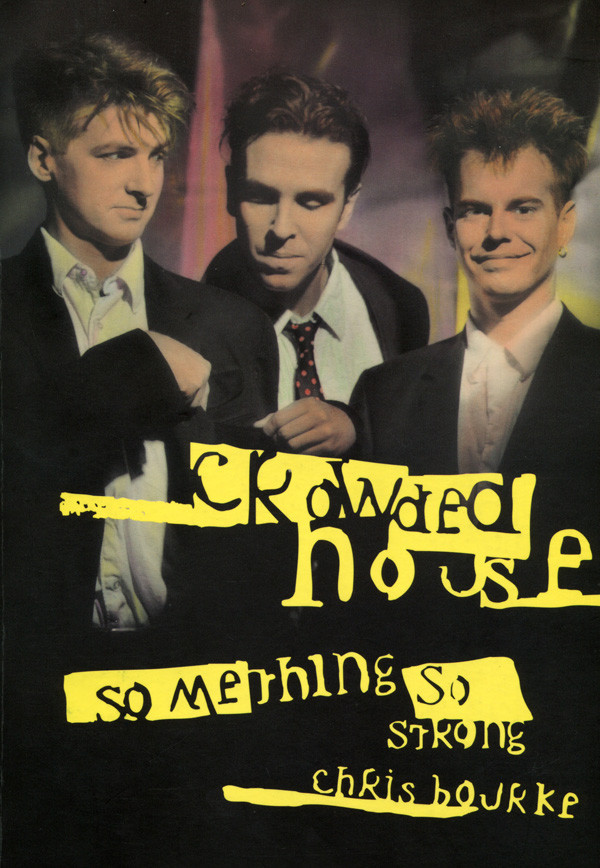
Something So Strong
When I complimented Chris Bourke on Something So Strong, his revealing and funny 1997 history of Crowded House, the best history written in New Zealand on a single act, he typically brushed the praise aside quickly. Too quickly, I thought at the time, a real New Zealand thing to do. I wondered if that was how Neil Finn had reacted when Chris approached him to write the Crowded House story.
Finn need not have worried. Something So Strong is the world-class rock biography that his world class act deserved. More than that, it was a different kind of rock book. A warm rock and roll tale, unmarred by hard drugs and drink. The scene where Paul Hester jams a microphone between his legs and metaphorically whacks off by banging the mic with his closed fist is one of the funniest rock anecdotes I’ve read.
There’s plenty more of interest as Bourke mines the work and life of Celtic mystic Finn and the driven and the frankly a little wacky Hester as Nick Seymour watches from an artful distance. The rough seas of their early career, the business, and their genius third and fourth albums are all well told here.
Split Enz and their successor projects are well served by Mike Chunn’s Stranger Than Fiction: The Life and Times of Split Enz (1992) and Kerry Doole with Chris Twomey’s Private Universe (1996).
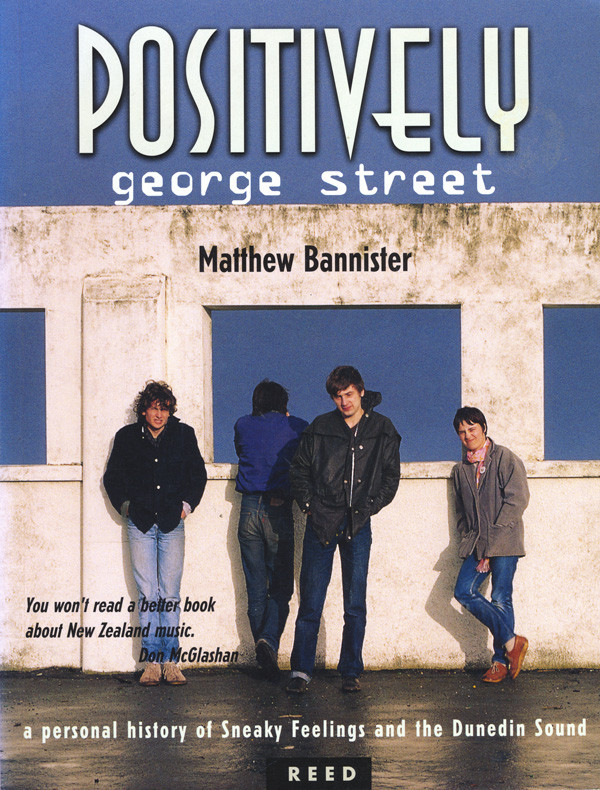
Positively George Street
Big group hug for Matthew Bannister, the guitarist and singer with Sneaky Feelings, Dribbling Darts of Love and The Weather. The Flying Nun experience was a less than joyous one, as he gets picked on by Chris Knox, misunderstood by your average Flying Nun Records fan and missed off label retrospectives. Every slight is detailed in his intelligent and well-written memoir Positively George Street: A Personal History of Sneaky Feelings and the Dunedin Sound from 1999.
Unlike the era’s many mythmakers, Bannister strips the Flying Nun Records cult veneer away and lets the real story peek through.
But not at the expense of Sneaky Feelings’ achievements – the joy of playing his first shows, making the band’s early (and best) records, the Dunedin Double recordings, Send You, and the majestic ‘Husband House’ single. It falls apart, as it always does, but not before a great New Zealand music tale unfolds.
As late as 2015, New Zealand’s punk and post-punk era was still thinly covered. Michael Larsen’s See Me Go from 2003 had many revealing anecdotes among its spread of on the road life. Wade Churton’s Have You Checked The Children?: Punk and Post-Punk Music In New Zealand 1977-1981 and Glam, Punk, and Scorched Earth Policy from 2000 and 2001 remain worthy formative music histories. Dave White’s thinly disguised autobiographical novel Bad Acid Soundtracks drew on his experiences on the road in Lung in the 1990s and is hard to track down. More available is I Believe You Are A Star, Peter McLennan’s 2013 fine collection of features from his early years as a pop culture commentator in the 1990s and early 2000s.
Ideas, perspective, contention, innovative use of texts, first person documentary and evaluation, unique potted history. A broad spread of voice, age and geography. There is much to admire in Erewhon Calling: Experimental Sound in New Zealand, the 2012 Bruce Russell and Richard Francis edited and Audio Foundation published compendium of thought, image and voice on and about the productive and long-lived experimental music community in New Zealand.
There is a lot of good history in there as well. Good as in factually sound, challenging and congruent with contemporary thought.
Bruce Russell’s Left-Handed Blows: Writing on Sound 1993-2009 from 2009 was a rare compendium of music related writing from a single observer. The central tension in Bruce’s work lies between the spontaneity of his creation and a fierce intelligence that enables him to unpick and examine.
His rediscovery and placing of Douglas Lilburn as a precursor of sound exploration in New Zealand and therefore Russell’s own creativity is a joy that unfolds in real time capturing the sense of pursuit, expectation and underlying need that propels those who ensure music is never forgotten.
Faith Singer
Faith Singer was a big woman with a big heart who lived and worked in Kings Cross in inner city Sydney. A retired 1960s blues belter on the lam amid the street life in Australia’s most notorious suburb, she’s ghosting through haunted by the drug overdose death of her daughter and sifting the human debris for one last redemptive rescue. That’s the core of Rosie Scott’s Faith Singer, her superlative novel from the year 2000.
There’s a broad echo of Scott’s other street rock drama Glory Days, which was set in edgy 1970s Auckland, but this novel is way better realised. It flows divinely and keeps you right there alongside the quick stepping Faith Singer as she gathers the scattered remnants of an idealistic generation to rescue a girl from drugs and the streets. An old friend who is now an environmental activist in Tasmania offers refuge, while Faith reassembles her band for a benefit concert to aid street kids.
I nearly disqualified Faith Singer because it was an Australian book, but a good part of the story of New Zealand rock and roll has unfolded in Australia. A New Zealand rock and roll novel set in Sydney, Australia, then.
Novels from those with direct experience as musicians are more numerous. Rachael King, the bass player in The 3Ds, Battling Strings, The Cakekitchen and Celine during the 1980s and early 1990s has two novels (The Sound of Butterflies and Magpie Hall) and a children’s book to her name.
Damien Wilkins was the guitarist and vocalist in Wellington’s The Jonahs in the 1980s before establishing himself as a popular writer with a string of novels published here and overseas. Chemistry in particular tells a story familiar to those on the darker edges of the rock experience. Wilkins recently returned to music releasing three fine alt-country-ish LPs (Group Hug, New Spirit and The Lines Are Open) as The Close Readers.
Charlotte Grimshaw’s Guilt finds an inner city Auckland world rich with late nightclub experience while Bill Direen takes in the South Island indie experience in Nusquama from 2001. The late Nigel Cox’s Tarzan Presley and The Cowboy Dog have an eye and feel for the popular culture of his time.
Swirly World: The Solo Voyages, Andrew Fagan’s epic tale of solo sailing from New Zealand to Australia and back is a remarkable 2001 effort from The Mockers frontman. Not content with that feat of stamina and endurance, Fagan circumnavigated New Zealand and conquered the wild waters around Auckland Islands south of Stewart Island in Swirly World Sails South from 2012.
Just For The Record
The final edition of one of New Zealand’s most valuable music reference books arrived in 2001. John Smith with help from Colin Linwood self published Just For The Record: A Discography of Vinyl Recordings by New Zealand Recording Artists from 1949 to 2000. The title said it all really. The exhaustively researched effort from the late John K Smith is essential reading for any serious local music historian.
Music was released here in forms other than vinyl of course. Tim Davey and Horst Puschmann’s Kiwi Rock discography ran to two editions in the mid-1990s, and included tape and CD releases focussed mainly on the punk and post punk era.
Just as essential is The Complete New Zealand Music Charts - 1966-2006, Dean Scapolo’s ongoing gathering of the details of New Zealand’s pop music charts, wherein he mops up all the country’s singles, albums, DVDs and compilation charts.
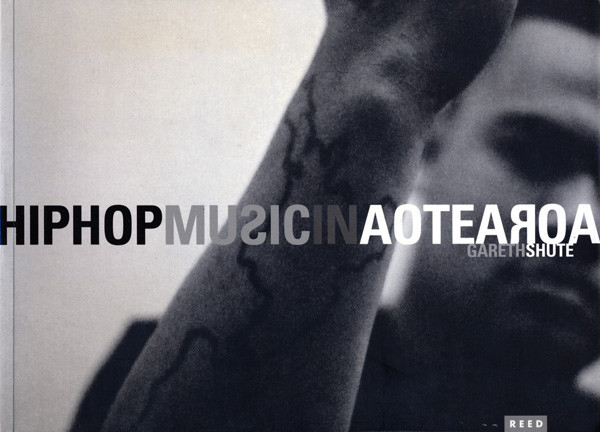
Gareth Shute’s NZ hip hop history from 2004, Hip Hop Aotearoa, was a grand look at its subject, which had the misfortune to be written too early in that there was a brace of genius records to come. If ever there was a New Zealand music book crying out for a sequel, it’s this.
How Bizarre
Eleven years on, Simon Grigg’s book on OMC, How Bizarre: Pauly Fuemana and The Song That Stormed The World, pushed the focus in on NZ hip hop’s biggest success story, revealing with candid punk honesty, all the joys, machinations and sadness of international pop success.

Books relative to particular music scenes or to definitions of sound and community include ethno-musicologist Mervyn McLean’s Tō Tātau Waka: In Search of Māori Music, 1958-1979 (2004) wherein the author goes in search of Māori music and sound in a compelling cultural travelogue.
Mahora Peters and James George’s Showband - Mahora and the Māori Volcanics, a rich subject area with plenty of scope left, plumbed Māori music of a more contemporary nature in 2005.
Mike Harding’s When The Pakeha Sings Of Home: a source guide to the folk & popular songs of New Zealand (1992) listed songs that mentioned New Zealand and Phil Garland took a stiff look at the same music with Faces In The Firelight: New Zealand Folksong & Story (2009).

When Rock Got Rolling
Wellington sociologist and 1960s survivor Roger Watkins focused on 1960s groups and soloists in Wellington and Auckland in two lengthy and detailed scene surveys, When Rock Got Rolling: The Wellington Scene, 1958-1970 (1989) and Hostage To The Beat: The Auckland Scene, 1955-1970 (1995).
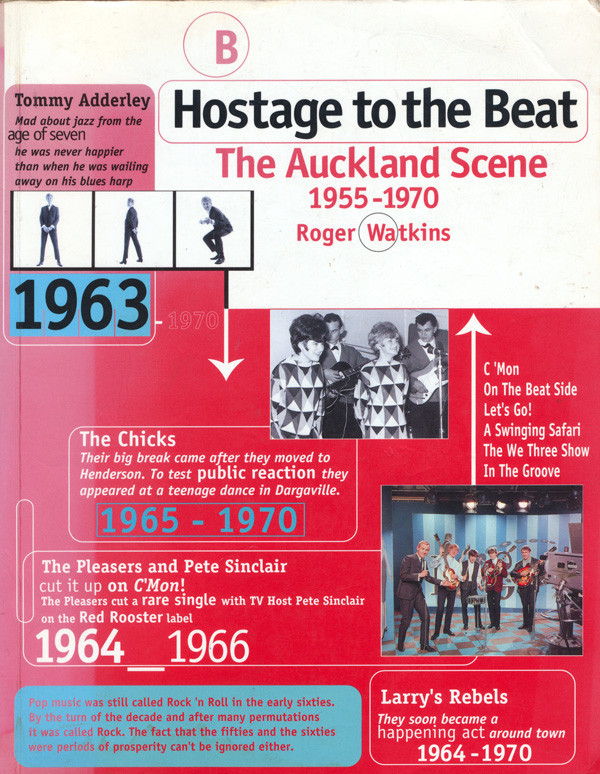
It’s rare to find a music fan unwilling to express an opinion, as journalist Grant Smithies found when he gathered up a whole bunch for Soundtrack - 118 Great New Zealand Albums (2007). The choice of albums is debatable, as it should be. But that’s not really the point. The point was to get some idea on how these albums impacted and Soundtrack more than achieves that goal by placing the albums covered firmly in our wider creative culture where they are surprisingly comfortable.
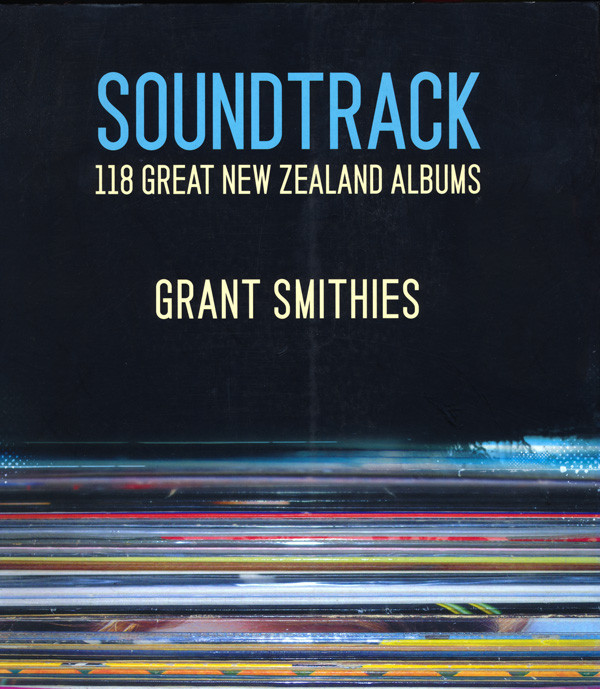
My favourite anecdote comes from Roy Colbert, buying original Chants R&B guitarist Jim Tomlin’s record collection (Jim plays jazz at Dunedin Casino) and the quoting of Sam Neill on Mike Rudd’s reaction to his praising Chants R&B (“Fuck off!!!”). There are plenty of good stories and writers to tell them here. Smithies’ writing is a joy throughout and chock full of insight and wonderful turns of phrase.
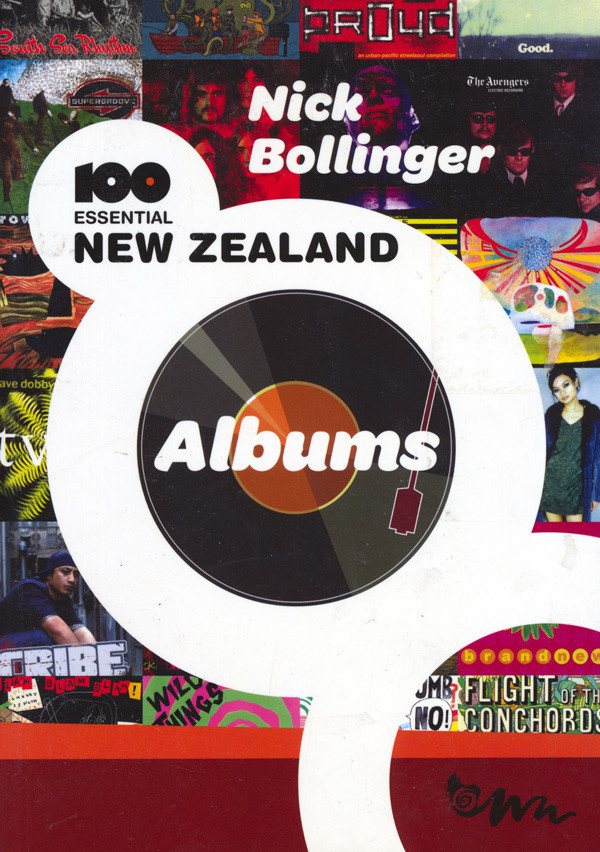
100 Essential New Zealand Albums
Nick Bollinger has been guiding people on what to listen to for decades through the NZ Listener and on Radio NZ. But that clearly wasn’t enough. Bollinger’s How To Listen To Pop Music arrived in 2004. He then collected up his favourite 100 albums for intelligent and engaging recollection as 100 Essential New Zealand Albums (2009).
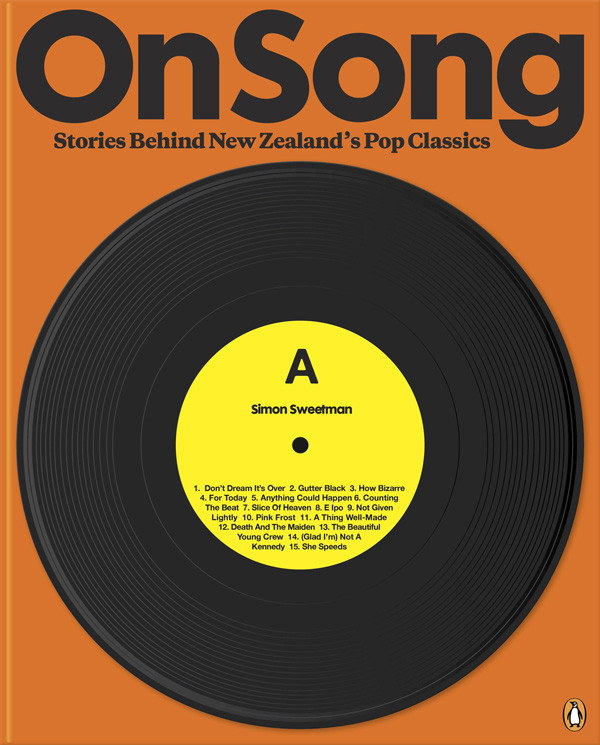
Fellow Wellington music critic Simon Sweetman pared it back to the songs themselves with added backstories in On Song: Stories Behind New Zealand’s Pop Classics (2012). Gordon Spittle’s Counting The Beat: a history of New Zealand song (1997) is well worth hunting down as well.

Sifting Waikato Times entertainment ads for Lou Reed live notices in 2009, my eye snagged on a small box notice announcing a Caledonian Hall (the site of many 1960s concerts in Hamilton) show featuring one Rat Pie. This being late 1977, I’d have assumed with a name like that it was an early punk group or some brain damaged Beefheart or Zappa concoction if I hadn’t just read Glory Days: from Gumboots to Platforms, University of Otago academic Ian Chapman’s personal history of glam in New Zealand.
Rat Pie are the protagonists of Chapman’s best anecdote wherein the teen glam fan auditions for a long hair Clapton-loving hippie band and is subjected to unaccustomed counter-culture depravity and ultimate rejection. It’s a nice metaphor for generational and pop cultural schism.
Chapman’s writing and narrative is strong and convincing throughout Glory Days as he traces his time as a glam loving teen in Hamilton. There’s a good eye for revealing detail at work here. Did you know Casey Kasem’s American Top 40 came weekly via airmail as two pressed vinyl albums of the hits and banter? Or that Slade played at Te Rapa racecourse in 1973?
The large and wildly variable collection of contributed observation of mostly South Island origin that sprinkles the book has Graeme Downes’ year-by-year 1970s countdown of rugby and classical music fandom and eventual introduction to punk as a highpoint.
Ian Chapman would go on to collate and write the gender specific Kiwi Rock Chicks, Popstars and Trailblazers (2010).
Live: Gigs That Rocked New Zealand, former journalist and radio industry executive Josh Easby and photographer Bruce Jarvis’s showcase of live rock photography with accompanying essays, is a frustratingly uneven affair. Initial quibbles about a lack of overview essay and specific dating of photographs and concerts aside, Easby, manages a pretty cool reminiscence of The Great Ngaruawahia Music Festival of 1973.
The book as a whole broadens our music history by focusing on overseas (and some local) groups who toured New Zealand and the rock photography that captured them.
Blue Smoke
There was one more music history published in 2010. Chris Bourke’s world class, pre-Beatles Blue Smoke: The Lost Dawn of New Zealand Popular Music 1918-1964 amazed with the spread of musical endeavour contained. It revealed the beginnings of independent record labels and extent of women’s and Māori participation in New Zealand popular music together with our ready utilisation of music related technology against the backdrop of a wide geographical spread of activity. A lost dawn reclaimed.

New Zealand rock biographies and autobiographies are thin on the ground. Roger Booth’s Bruno: The Bruno Lawrence Story (1999) failed to find favour with Bruno Lawrence’s inner circle, but is an honest view of the larger than life drummer and actor nonetheless. Christine Mintrom’s Tommy Adderley (1940-1993): The Man and His Contributions to Pop, Jazz and Rock Music in New Zealand (2003) is a little seen well researched and written biography of the man.
The Kiwi Modfather
New Zealand rock and roll is lucky to have a pioneer like Ray Columbus, the working class kid from Christchurch who never stopped believing that talent was alive and kicking in his home country. His instinct, determination and sense of style are admirable and brave. Standing out in the 1950s and 1960s took balls. So did pushing your own songs, seizing fast, unfolding opportunity and riding it all the way to top in Australasia. The journey is well recreated by Ray in collaboration with Margie Thomson in Ray Columbus: The Kiwi Modfather: The life and times of a rock n roll pioneer (2011).
There’s a richness of life and experience reflected here that formal history rarely ever finds. Ray’s childhood and beginnings as a performer in the garden city amidst a sometimes fraught family life are so deftly evoked that they prompt memories of Paul Shannon’s novel, Davey Darling, which shares the same working class Christchurch turf.
Columbus sees with fresh visitor’s eyes, the vibrancy on and around Queen Street in Auckland on his arrival there in 1964 with The Invaders. There are lunchtime shows in cafes and music everywhere. Those same eyes got to see The Rolling Stones up close and California at the height of the summer of love.
If The Modfather has a weakness, it’s that Ray sometimes reaches a little far to make a point. He’s dismissive of his bandmates’ post-Invaders careers in arguing that they never topped Ray Columbus and The Invaders. That ignores Billy Kristian’s time in the US Top 40 as a member of Night after playing in high profile jazz groups in Great Britain, together with Kristian’s production of reggae institution Herbs. Guitarist Dave Russell produced Split Enz and The Scavengers. Jimmy Hill was the drummer in Tommy Adderley’s Headband, who recorded enduring hit singles including one Hill wrote, ‘Love Is Bigger Than The Whole Wide World’.
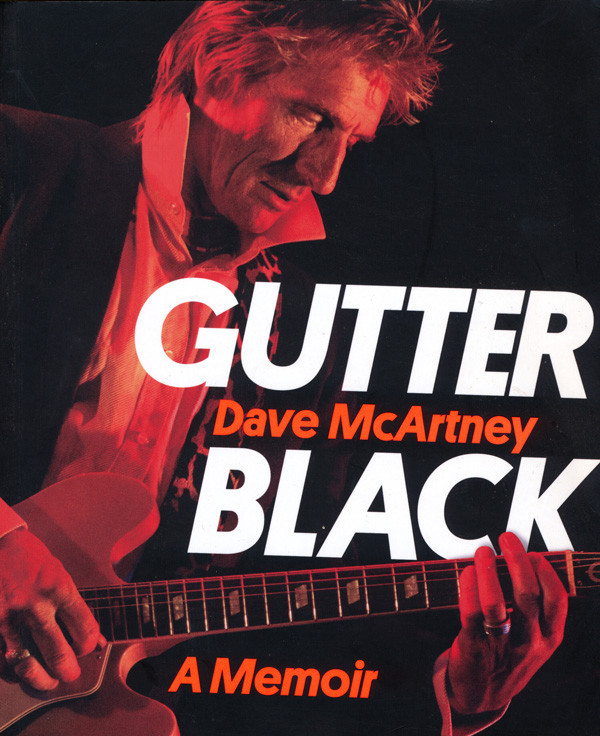
Gutter Black
Gutter Black: Dave McArtney - A Memoir published in 2014 just after Dave McArtney’s death is perhaps New Zealand’s best-realised music book. The Hello Sailor and Pink Flamingos’ guitarist and singer had a way with words that transcended those of his well-remembered songs, but nonetheless retained their lyrical and allusive flow. The same honest unflinching eye revealed distinctive times in ‘Gutter Black’ and so many more songs; the book of the same name is surely one for future writers to emulate.
--
Read more: New Zealand rock memoirs, 2015-2020